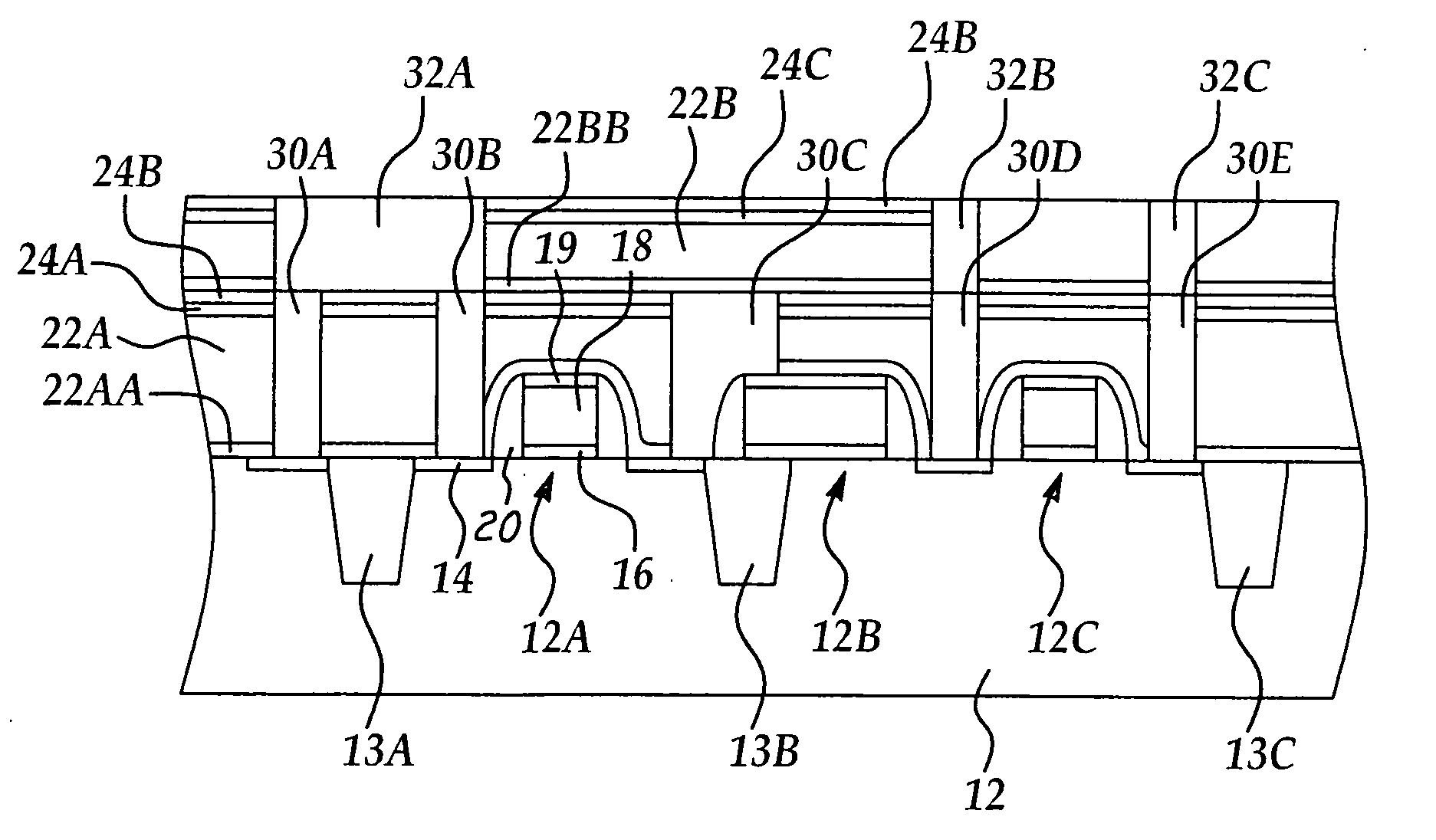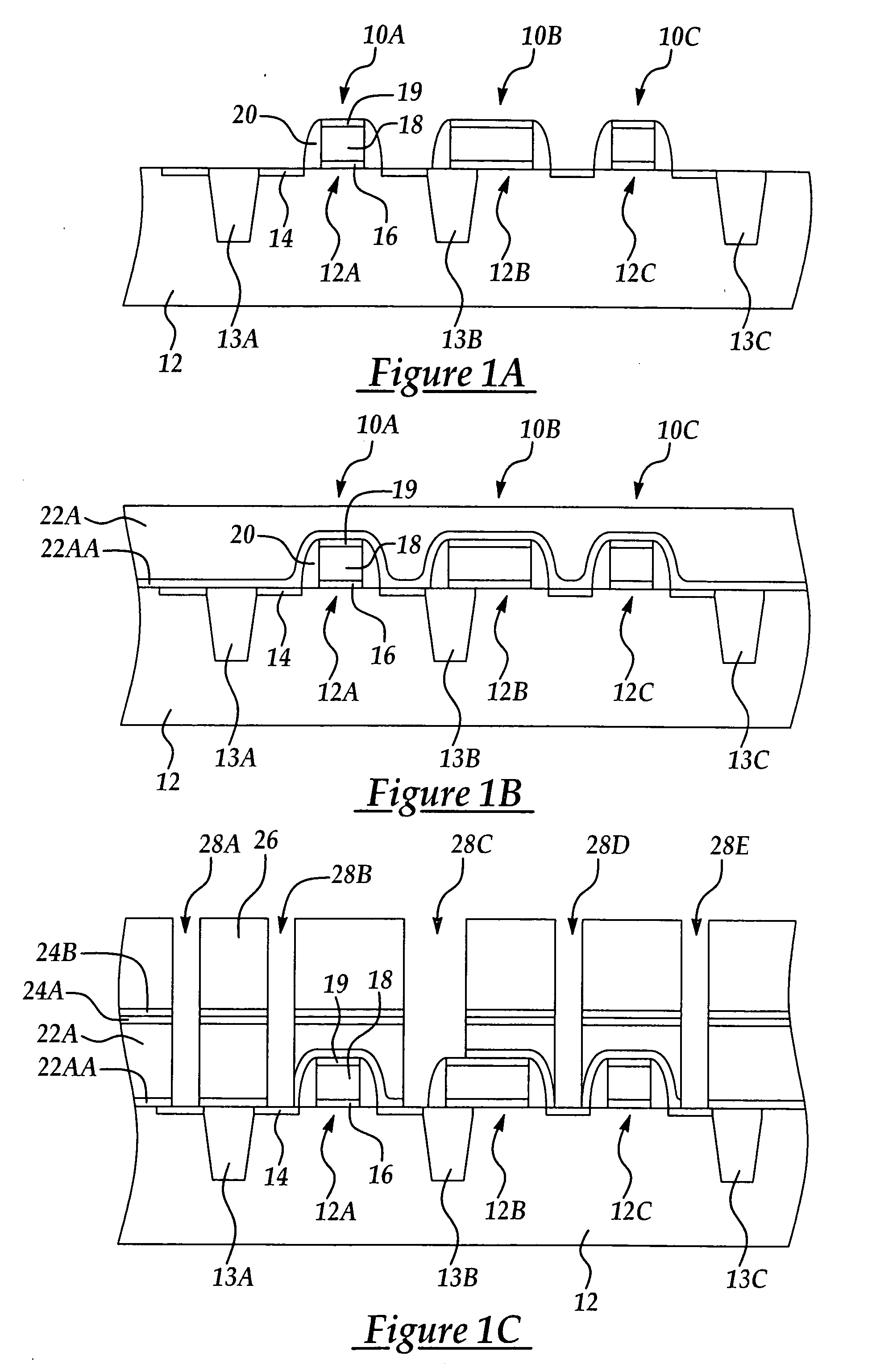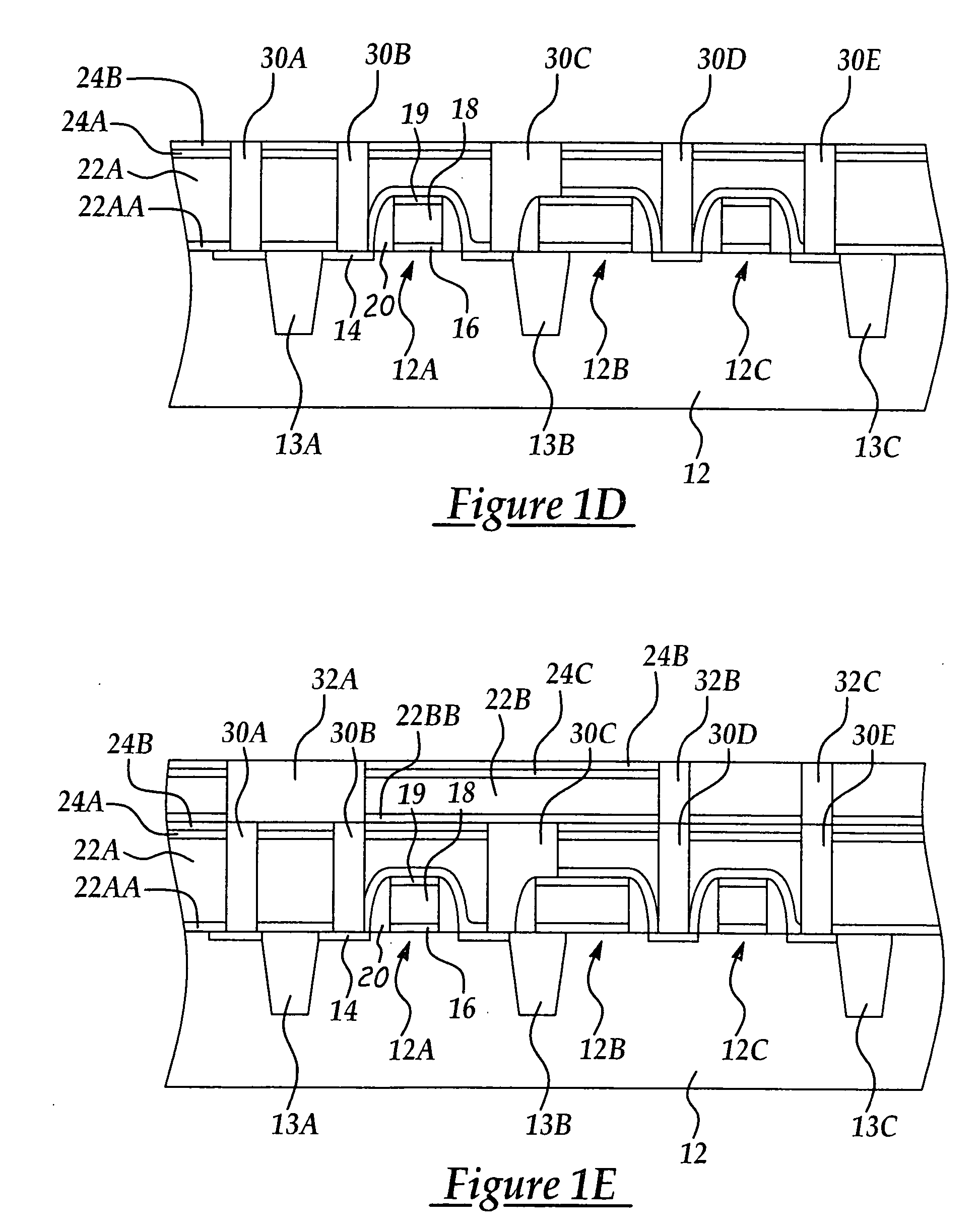Contact structure for nanometer characteristic dimensions
- Summary
- Abstract
- Description
- Claims
- Application Information
AI Technical Summary
Benefits of technology
Problems solved by technology
Method used
Image
Examples
Embodiment Construction
[0013] Although the method of the present invention is explained with reference to an exemplary CMOS transistor and shallow trench isolation (STI) structures, it will be appreciated that the shallow contact interconnects and method of forming the same may be applied in general to forming contact interconnects where an integrated circuit device or process may be improved by forming contact interconnects in a multi-step process to overcome processing issues and device performance issues related to forming high aspect ratio damascene openings. In addition, it will be appreciated that while the device and method of the present invention is particularly advantageously used for forming integrated circuit devices with characteristic dimensions (e.g., gate lengths) less than about 60 nm, including less than about 45 nm, that the method and structure may be used in forming larger characteristic dimension devices.
[0014] Referring to FIGS. 1A-1E in an exemplary embodiment of the method of the...
PUM
 Login to View More
Login to View More Abstract
Description
Claims
Application Information
 Login to View More
Login to View More - R&D
- Intellectual Property
- Life Sciences
- Materials
- Tech Scout
- Unparalleled Data Quality
- Higher Quality Content
- 60% Fewer Hallucinations
Browse by: Latest US Patents, China's latest patents, Technical Efficacy Thesaurus, Application Domain, Technology Topic, Popular Technical Reports.
© 2025 PatSnap. All rights reserved.Legal|Privacy policy|Modern Slavery Act Transparency Statement|Sitemap|About US| Contact US: help@patsnap.com



